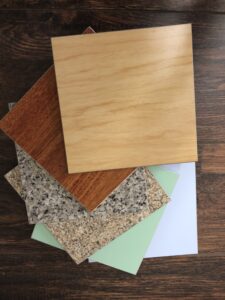 UV-stable colored fiber cement boards are a popular choice for exterior cladding and siding because they combine the durability of fiber cement with long-lasting color. The two primary methods for achieving UV-stability and color are:
UV-stable colored fiber cement boards are a popular choice for exterior cladding and siding because they combine the durability of fiber cement with long-lasting color. The two primary methods for achieving UV-stability and color are:
- Factory-Applied, Baked-On Color Coatings (e.g., ColorPlus Technology):
- This is generally considered the most durable and fade-resistant option.
- A multi-coat, proprietary paint finish is applied in the factory and cured (baked-on) between coats, which creates a very strong, UV-resistant bond.
- Manufacturers offering this typically provide long, non-prorated warranties (often 15 to 30 years) specifically on the finish/color fade.
- Through-Color (or Through-Body) Fiber Cement:
- In this method, the UV-resistant color pigments are mixed into the fiber cement slurry before the board is formed and cured.
- The color penetrates the entire thickness of the board, meaning that minor scratches or chips are less noticeable because the color underneath is the same as the surface.
- These often have a natural, often non-uniform, look (like natural stone) and can be finished with a clear, UV-resistant shield or varnish for enhanced protection and easy cleaning (anti-graffiti).
Key Factors for UV Stability and Durability
- Type of Finish: Factory-applied coatings are engineered specifically for long-term UV and weather resistance, typically outperforming site-applied paint. Through-color boards offer consistency but may also be sealed for ultimate surface protection.
- Pigments and Coatings: Modern, high-quality products use advanced, UV-stable pigments and protective coatings (like UV-cured resin or PVDF) that resist breakdown from sunlight.
- Alkalinity: Fiber cement has a high pH (alkaline). High-quality factory finishes and recommended site-applied paints are formulated to resist “alkaline burn,” which can cause fading and poor adhesion with standard paints.
- Climate Engineering: Some top manufacturers engineer their boards with different formulations to perform optimally in specific climate zones, addressing factors like extreme heat, humidity, freeze-thaw cycles, and UV intensity.
When selecting boards, look for products that specifically mention UV resistance, fade resistance (with a warranty against fading), and either a baked-on finish or through-color technology.
30
SEP
2025
SEP
2025
0
